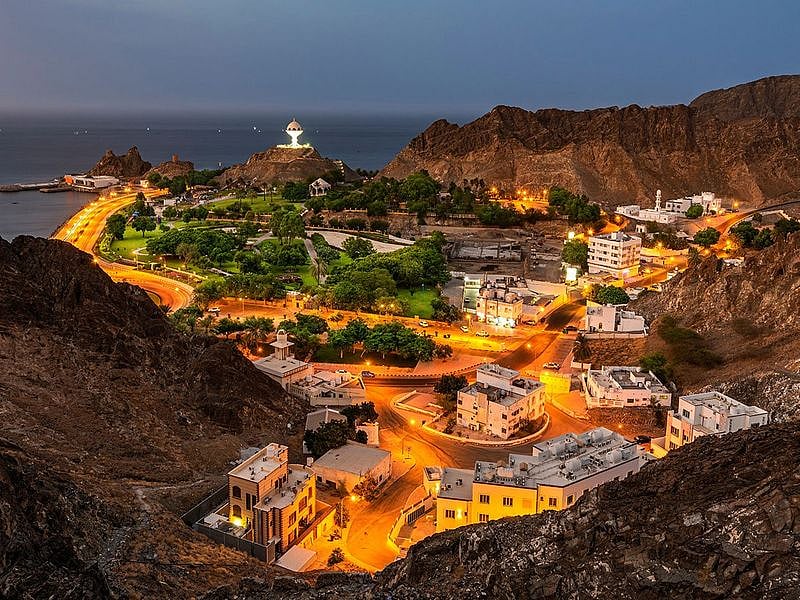10 travel experiences in Oman every UAE traveller must have
Wildlife sanctuaries, heritage trails, and green cities make Oman a model for eco-travel

Dubai: Oman isn’t chasing tourism headlines — it’s quietly building one of the region’s most responsible and rewarding travel experiences.
The Sultanate is building a reputation as the Middle East’s most sustainable travel hotspot, and it’s not just talk — the Ministry of Heritage and Tourism is reshaping how the country welcomes visitors, blending comfort, conservation, and culture.
For UAE residents, it’s an easy weekend drive or short flight, yet the experience feels completely different: slower, greener, and deeply rooted in culture.
Here are ten ways Oman is making sustainability more than just a slogan:
1. Watch sea turtles nest at Ras Al Jinz
Between May and September, hundreds of green turtles come ashore at Ras Al Jinz Turtle Reserve near Sur. Guided night tours cap group sizes to limit light and noise, giving visitors a close view of nesting turtles without disturbing them.
2. Visit Arabian Oryx Sanctuary in Al Wusta
The Arabian Oryx Sanctuary, spanning over 27,000 square kilometres, is one of the Gulf’s largest conservation zones. It’s home to more than 600 Arabian oryx, gazelles, and sand cats — a rare example of wildlife reintroduction that actually worked.
3. Snorkel Coral Gardens of Daymaniyat Islands
A 45-minute boat ride from Muscat, the Daymaniyat Islands Nature Reserve protects over 100 coral species and nesting sites for hawksbill turtles. Visitor numbers are capped daily, and operators must follow “no-touch, no-feed” diving rules to keep reefs pristine.
4. Hike Balcony Walk in Jabal Shams
The Mountain Slopes initiative includes Oman’s most scenic trek — the Balcony Walk overlooking Wadi Nakhr. Local guides help visitors navigate the cliffs safely while ensuring trails remain erosion-free. Hiking here directly supports small mountain communities.
5. Follow Frankincense Trail in Dhofar
In Salalah, travellers can trace the UNESCO-listed Frankincense Trail, visiting ancient ports like Khor Rori and Sumhuram where the resin was once traded. Many groves are community-run, keeping profits local and preserving centuries-old harvesting techniques.
6. Tour rose terraces of Jabal Al Akhdar
Each April, farmers in Al Jabal Al Akhdar harvest Damask roses to make pure rose water. Visitors can tour terraced fields, watch distillation, and buy directly from growers — reducing middlemen and keeping traditional production alive.
7. Walk ancient Aflaj water channels
Oman’s Falaj irrigation systems, some dating back 2,000 years, still channel mountain water to villages. Visit Falaj Daris in Nizwa or Falaj Al-Khatmeen in Birkat Al-Mouz to see how these gravity-fed networks sustain farms with zero pumps or power.
8. Stay at a Solar-Powered Mountain Resort
In Al Jabal Al Akhdar, resorts like Alila Jabal Akhdar and Sahab Resort run partly on solar power and use greywater recycling. Staff are mostly local, and menus rely on regional produce — small details that cut waste and boost community income.
9. See Oman’s Sustainable City in Yiti
Just outside Muscat, the Sustainable City – Yiti is taking shape as Oman’s first carbon-neutral urban district. It includes solar rooftops, electric transport, and a wastewater recycling system — real examples of green infrastructure in progress.
10. Old, new in Muscat and Salalah
From Muscat’s restored Muttrah Corniche to Salalah’s new smart-city plan, Oman’s urban projects mix modern infrastructure with heritage preservation — wide walkways, shaded souqs, and public art designed for locals and visitors alike.
Why it's worth for UAE travellers
For those seeking cleaner air, quieter escapes, and cultural depth — Oman delivers all three just a few hours away. Its approach isn’t built on luxury slogans but on real choices: smaller groups, locally managed lodges, and tangible respect for nature.
It’s proof that responsible travel doesn’t have to be complicated — it just needs to be done right.
Sign up for the Daily Briefing
Get the latest news and updates straight to your inbox
Network Links
GN StoreDownload our app
© Al Nisr Publishing LLC 2025. All rights reserved.
